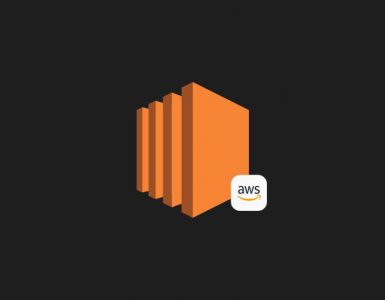Advanced Serverless Patterns
After establishing the fundamentals of deploying serverless applications with AWS Lambda and Terraform, we can explore more sophisticated serverless patterns. These patterns leverage additional AWS services to build complex, scalable, and highly available applications. We’ll dive into building serverless APIs, integrating with DynamoDB for data persistence, and setting up scheduled tasks.
Building Serverless APIs with API Gateway and Lambda
Creating RESTful APIs with AWS API Gateway and Lambda functions allows you to develop scalable backend services for your applications without managing servers.
– Versioning and Stages:
Implement API versioning to manage different stages of your API (development, staging, production) effectively. Use Terraform to manage these configurations for consistency and ease of deployment.
– Authorization:
Secure your API using token-based authorization mechanisms (e.g., JWT tokens) or AWS Cognito for user authentication and authorization.
– Integrating API Gateway with Other Services: Beyond Lambda, API Gateway can direct traffic to other AWS services like S3 for file downloads or SQS for queue processing. Explore how to set up these integrations for a more flexible architecture.
Using DynamoDB with Serverless Applications
AWS DynamoDB offers a fast and flexible NoSQL database service that scales seamlessly. It’s a perfect match for serverless architectures, providing data persistence for your applications.
– DynamoDB Table Setup with Terraform:
Define a DynamoDB table in Terraform, specifying attributes, keys, and throughput settings. Learn how to integrate this table with your Lambda functions for CRUD operations.
resource “aws_dynamodb_table” “my_table” {
name = “MyTable”
billing_mode = “PAY_PER_REQUEST”
hash_key = “id”
attribute {
name = “id”
type = “S”
}
}
– Best Practices for Data Modeling:
Understand the best practices for DynamoDB data modeling to optimize performance and cost. This includes choosing the right key structures and considering access patterns when designing your tables.
– Advanced Features:
Explore advanced DynamoDB features such as Global Secondary Indexes for flexible query patterns and DynamoDB Streams for reacting to changes in data in real-time.
Scheduling Lambda Functions
Scheduled events can trigger AWS Lambda functions, allowing you to run background tasks on a regular schedule. This is useful for routine jobs like data backup, report generation, or cleanup tasks.
– Using CloudWatch Events to Schedule Functions:
Set up CloudWatch Events (EventBridge) to trigger your Lambda functions. You can specify the schedule using cron or rate expressions.
resource “aws_cloudwatch_event_rule” “every_hour” {
name = “every-hour”
description = “Fires every hour”
schedule_expression = “rate(1 hour)”
}
resource “aws_cloudwatch_event_target” “trigger_lambda” {
rule = aws_cloudwatch_event_rule.every_hour.name
arn = aws_lambda_function.my_scheduled_function.arn
}
resource “aws_lambda_permission” “allow_cloudwatch” {
statement_id = “AllowExecutionFromCloudWatch”
action = “lambda:InvokeFunction”
function_name = aws_lambda_function.my_scheduled_function.function_name
principal = “events.amazonaws.com”
source_arn = aws_cloudwatch_event_rule.every_hour.arn
}
– Best Practices: Learn best practices for managing and monitoring scheduled tasks, including error handling, logging, and using dead-letter queues (DLQs) to capture failed executions.
Conclusion
Advanced serverless patterns extend the basic capabilities of serverless applications, enabling more complex and scalable architectures. By integrating AWS API Gateway, Lambda, and DynamoDB, you can build robust backend services that are highly available and scalable. Further, utilizing scheduled events for Lambda functions allows you to automate routine tasks efficiently. Through Terraform, these patterns are codified, making it easier to deploy, manage, and evolve your serverless infrastructure.
Infrastructure as Code Best Practices
Adopting Infrastructure as Code (IaC) practices transforms how organizations provision and manage their IT infrastructure. Terraform, with its declarative configuration files, enables you to automate the setup and maintenance of hardware components, operating systems, and applications. This section outlines best practices for using Terraform effectively, focusing on organization, security, and collaboration.
Structuring Your Terraform Projects
Properly structuring your Terraform projects is crucial for readability, maintenance, and scalability. Consider these guidelines:
– Use Modules Wisely:
Modularize your infrastructure by grouping related resources into modules. This makes your Terraform configurations reusable and easier to manage.
– Keep Your Backend Configuration Separate:
Store your backend configuration in a separate file (`backend.tf`) to distinguish it from your main configuration. This helps in managing state files more efficiently.
– Organize Resources by Environment:
Use separate directories or workspaces for different environments (development, staging, production) to isolate resources and minimize the risk of accidental changes to critical infrastructure.
Managing Terraform State in Teams
Terraform state files track the current state of your infrastructure and are crucial for Terraform operations. In a team setting, consider these practices:
– Remote State Storage:
Store your state files in a remote backend like AWS S3 with state locking and encryption to ensure that only one person or process can modify the state at any time and to protect sensitive information.
– State File Security:
Limit access to the state files using IAM roles and policies. Ensure that only authorized personnel can read or modify the state.
– Use State Locking:
Always enable state locking to prevent concurrent operations that could corrupt your state file.
Security Best Practices with Terraform and AWS
Security is paramount when managing infrastructure. Apply these security best practices in your Terraform projects:
– Least Privilege Access:
Use IAM roles and policies to grant the minimum necessary permissions to Terraform and other automated processes.
– Secrets Management:
Avoid hardcoding sensitive information like passwords or access keys in Terraform configurations. Use AWS Secrets Manager or the Terraform `aws_secretsmanager_secret` resource to manage secrets securely.
– Regularly Review IAM Policies:
Regularly audit IAM roles and policies to ensure they adhere to the principle of least privilege. Remove unnecessary permissions and roles.
– Encrypt Sensitive Data:
Use encryption for sensitive data, both in transit and at rest. Utilize services like AWS KMS for managing encryption keys.
Version Control and Collaboration
Version control is an essential aspect of working with Terraform, especially in team environments.
– Use Version Control Systems (VCS):
Store your Terraform configurations in a version control system like GitLab to track changes, collaborate on code reviews, and manage releases.
– Implement Code Review Processes: Before applying changes, use merge requests or pull requests to review changes. This ensures that multiple eyes have vetted modifications, reducing the chance of errors.
– Automate Terraform Workflows: Utilize CI/CD pipelines to automate the testing and deployment of Terraform configurations. This can help in identifying issues early and streamlining the deployment process.
Conclusion
Applying these best practices can significantly enhance the effectiveness, security, and maintainability of your Terraform projects. By structuring projects logically, managing Terraform state securely, adhering to security guidelines, and leveraging version control for collaboration, you establish a solid foundation for managing your infrastructure as code. As you grow and scale your infrastructure, these practices will ensure that your Terraform projects remain manageable, secure, and efficient.
CI/CD with GitLab for AWS Deployments
Continuous Integration and Continuous Deployment (CI/CD) practices enable teams to automate the testing and deployment of applications, leading to faster development cycles and higher quality software. GitLab offers a powerful, integrated CI/CD platform that can work seamlessly with AWS and Terraform to automate the deployment process. This section explores how to set up a CI/CD pipeline in GitLab for AWS deployments, leveraging Terraform for infrastructure as code.
Overview of GitLab CI/CD
GitLab CI/CD is a part of the GitLab platform that automates the process of software development, from code integration, testing, building, to deployment. Key components include:
– .gitlab-ci.yml: The YAML file where you define your CI/CD pipeline configurations.
– Runners: Agents that execute the jobs defined in your pipeline.
– Jobs, Stages, and Pipelines: Organizational structures within GitLab CI/CD to manage the lifecycle of your software.
Building a CI/CD Pipeline for AWS with Terraform
To automate AWS deployments with Terraform using GitLab CI/CD, follow these steps:
- Set Up Your GitLab Repository: Store your application code and Terraform configurations in a GitLab repository. Ensure your Terraform files are organized and modularized for easier management.
- Configure AWS Credentials Securely:Use GitLab’s CI/CD variables to securely store your AWS access keys. This allows your pipeline to authenticate with AWS without hardcoding sensitive information.
variables:
AWS_ACCESS_KEY_ID: $AWS_ACCESS_KEY_ID
AWS_SECRET_ACCESS_KEY: $AWS_SECRET_ACCESS_KEY
AWS_DEFAULT_REGION: “us-east-1”
- Define Your Pipeline in .gitlab-ci.yml:Create a `.gitlab-ci.yml` file in the root of your repository to define your pipeline stages, such as linting, testing, building, deploying, and cleaning up.
stages:
– validate
– build
– deploy
validate_terraform:
stage: validate
image: hashicorp/terraform:light
script:
– terraform init
– terraform validate
deploy_to_aws:
stage: deploy
imag
e: hashicorp/terraform:light
script:
– terraform init
– terraform apply -auto-approve
only:
– masterAutomating Terraform Workflow: Incorporate Terraform commands (`init`, `validate`, `plan`, `apply`) within the jobs. Use the `only` keyword to specify branches that trigger the deployment, ensuring that changes are thoroughly tested before being deployed to production.
- Use Terraform Workspaces for Environment Management:Terraform workspaces allow you to manage separate state files for different environments (development, staging, production) within the same configuration. Utilize workspaces in your CI/CD pipeline to ensure that the correct environment is targeted for each deployment.
Automated Testing and Deployment Strategies
– Implement Automated Testing: Before deploying, run automated tests on your infrastructure code and application. This ensures that only code that passes all tests is deployed.
– Deployment Strategies: Consider deployment strategies such as blue-green deployments or canary releases to minimize downtime and reduce the risk of introducing bugs into production.
– Monitoring and Feedback: Integrate monitoring tools into your deployment process to collect feedback on performance and errors. This allows you to quickly respond to issues that may arise after deployment.
Conclusion
Integrating GitLab CI/CD with AWS and Terraform automates the process of testing and deploying your applications and infrastructure, ensuring consistent, reliable, and secure deployments. By following the practices outlined in this section, you can streamline your development workflows, reduce manual errors, and speed up the delivery of new features and fixes. As you grow, the flexibility of GitLab CI/CD, combined with the power of AWS and the predictability of Terraform, provides a robust foundation for scaling your infrastructure and development practices.
Keeping Your Infrastructure Up-to-Date and Secure
As your infrastructure grows in complexity and scale, maintaining its security and keeping it up-to-date becomes increasingly critical. This section focuses on strategies for monitoring, logging, security scanning, and best practices for updating and maintaining your AWS infrastructure managed with Terraform and GitLab CI/CD. By implementing these practices, you can ensure your infrastructure remains robust, secure, and able to support your applications effectively.
Monitoring and Logging with AWS Solutions
AWS provides several services for monitoring and logging, which are essential for understanding the state of your infrastructure, identifying issues, and responding to incidents.
– Amazon CloudWatch: Use CloudWatch for monitoring resources and applications, collecting and tracking metrics, collecting and monitoring log files, setting alarms, and automatically reacting to changes in your AWS resources.
– AWS CloudTrail: CloudTrail provides a history of AWS API calls for your account, including API calls made via the AWS Management Console, AWS SDKs, command line tools, and other AWS services. This is valuable for security and compliance auditing.
– Implementing Logging in Terraform: Ensure that logging is enabled for all resources that support it. Use Terraform to configure logging to S3 buckets or CloudWatch Logs.
Implementing IaC Security Scans
– Static Analysis: Utilize tools like `tfsec` and `checkov` to perform static analysis of your Terraform configurations. These tools can identify potential security issues based on predefined rules.
– Integrate Security Scanning into CI/CD: Incorporate security scanning into your GitLab CI/CD pipeline. Run security scans as part of the pipeline to ensure that no high-risk changes are deployed without being reviewed and remediated.
Terraform and AWS Best Practices for Updates and Maintenance
– Regularly Review and Update AWS Resources: Keep an eye on AWS service announcements and updates. Regularly review your infrastructure to take advantage of newer, more efficient, or more secure resource types or features.
– Version Pinning in Terraform: Pin the versions of the Terraform providers and modules to avoid unexpected changes during `terraform apply`. Update these versions in a controlled manner after testing the changes in a non-production environment.
provider “aws” {
version = “~> 3.27”
region = “us-west-2”
}
– Terraform State Management: Regularly review the Terraform state file for anomalies and perform state file maintenance such as `terraform state list` and `terraform state rm` for resources no longer managed by Terraform.
– Automate Dependency Updates: Use tools and scripts to automate the process of updating dependencies, Terraform providers, and modules. Ensure that these updates go through your CI/CD pipeline for testing before being deployed to production.
Continuous Security and Compliance
– Identity and Access Management (IAM): Regularly audit IAM roles, policies, and permissions. Ensure that the principle of least privilege is applied and that old or unused roles and permissions are revoked.
– Encrypt Sensitive Data: Use AWS services like KMS (Key Management Service) to manage encryption keys and ensure that all sensitive data stored in S3 buckets, databases, and other storage services are encrypted at rest and in transit.
– Regular Compliance Audits: Use AWS Config and third-party tools to continuously monitor and audit your infrastructure for compliance with internal policies and external regulations.
Conclusion
Maintaining the security and integrity of your infrastructure is an ongoing process that requires vigilance, automation, and regular review. By leveraging AWS monitoring and logging services, implementing security scans within your CI/CD pipeline, and following best practices for updating and securing your infrastructure, you can create a resilient and secure environment that supports your application needs. Integrating these practices into your development and deployment workflows ensures that your infrastructure remains robust, efficient, and aligned with industry standards and regulations.






Add comment